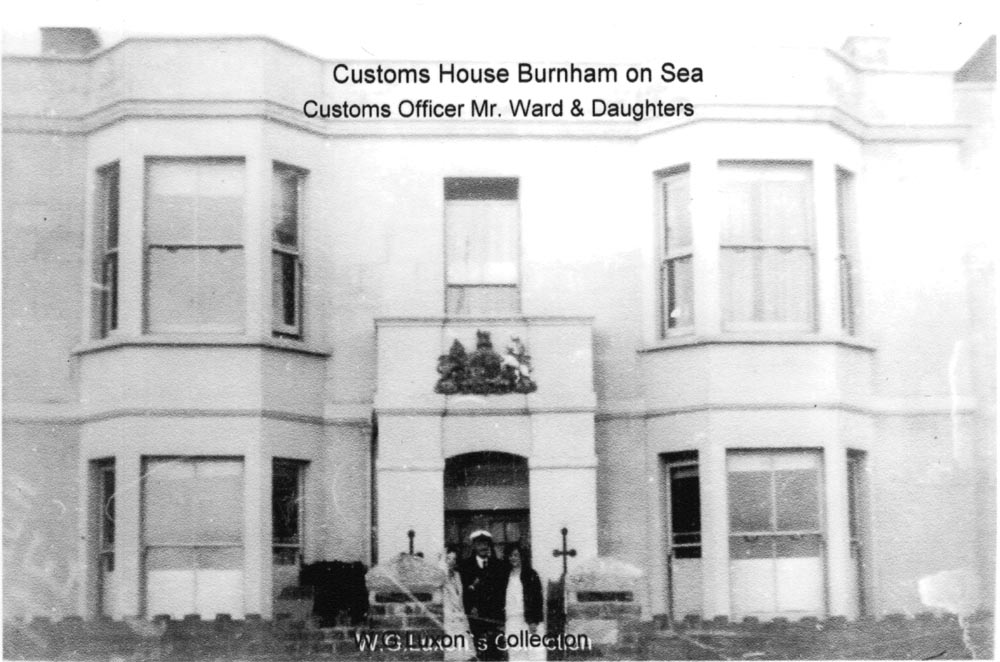
Owing to the amount of shipping trade entering the river Parrett Burnham had its own Custom House on the Esplanade (currently a Fish and chips Bar). Erected around 1840 it was used principally to check goods arriving from overseas and bound for the Ports of Bridgwater and Langport.
The first recorded occupier was William Ward (1866) who was ‘Tide surveyor (Customs)’ it is not known how long he held the post, but it later passed to a Mr Harry Ward (probably his son). Harry’s daughter, Mrs Ruth Dade, recalled living in the Customs House:
“We children used to dash across to the sea front and then plunge into the sea for a swim. There was very little traffic in those days and the beach was much cleaner…..When ships arrived at Burnham, on their way up to the port of Highbridge, Dunball and Bridgwater, dad would board them and inspect their cargoes. Some were small sailing ships but we also had quite a few steamers that came from all over the south west. At bank holidays a Dutch steamer used to come over from Holland and it was run by a family. There were always lots of children on board. Dad knew the captain and all the family would come to tea at our house and then we would go and have a meal on board their ship. We had some very happy days then. Another thing I remember was that we had a large barometer on the wall ooutside the Customs House and all the pilots and seamen used to come along and consult it every day. The two front rooms of the Customs House were kept for the pilots who had to go off to the ships as they approached Burnham. Often they had to seep there on a large old settee, because they used to go out early in the morning when the tide served. They could also make themselves light meals and cups of tea.” (Ivor Punnett, Burnham & Highbridge Weekly News 1980s, from Royston Broome Collection)
Another local man known to have been employed at the Burnham Customs House was Henry Cox (b.1825, d.1915). He is known to have entered the Customs service at an early age and may have worked alongside Mr William Ward at Burnham before moving to the Minehead Customs House. He had returned to live in Burnham High St by the time of his death. His son Capt. B Cox was killed in 1911 when his ship the Hatfield, of Cardiff, went to the aid of the crippled Glasgow in a stormy North Sea and was over-run by the latter with the loss of all but one of the crew. (Burnham Gazette & Somerset Advertiser 7th Oct 1911 and 3d July 1915).
Records show that in the mid-20th Century the customs work came under jurisdiction of Bridgwater. The building was also originally known as ‘The Maroon’ as it was from here that the maroon was fired to call out the Lifeboat crew.
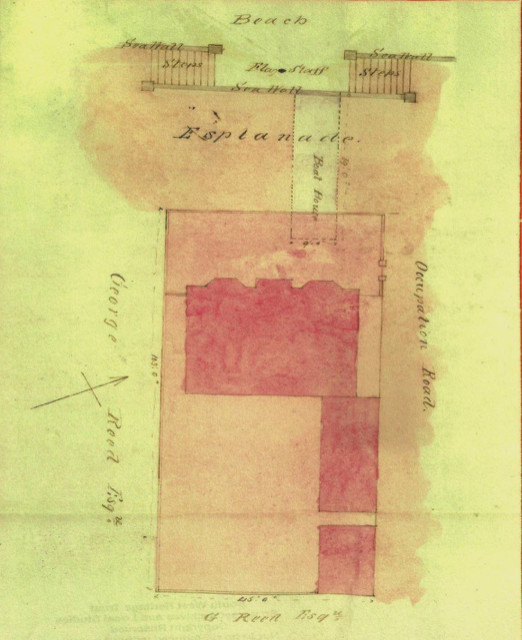
The plan above, attributed to George Reed, shows one of the two proposed boathouses under the Esplanade opening direct from the Customs house onto beach. It is believed that one of the boathouses held the Customs officers boat and the other the early Burnham lifeboat (see Lifeboat House and Major Storms and Floods). These boathouses remained accessible from the beach under the shelter platform which was later built out from the Esplanade in front of the Customs House where the original beach steps were. This platform was eventually rebuilt to accommodate public toilets. The boathouses were used for storage until the development of the new sea defences in the 1980’s. They are now no more in evidence
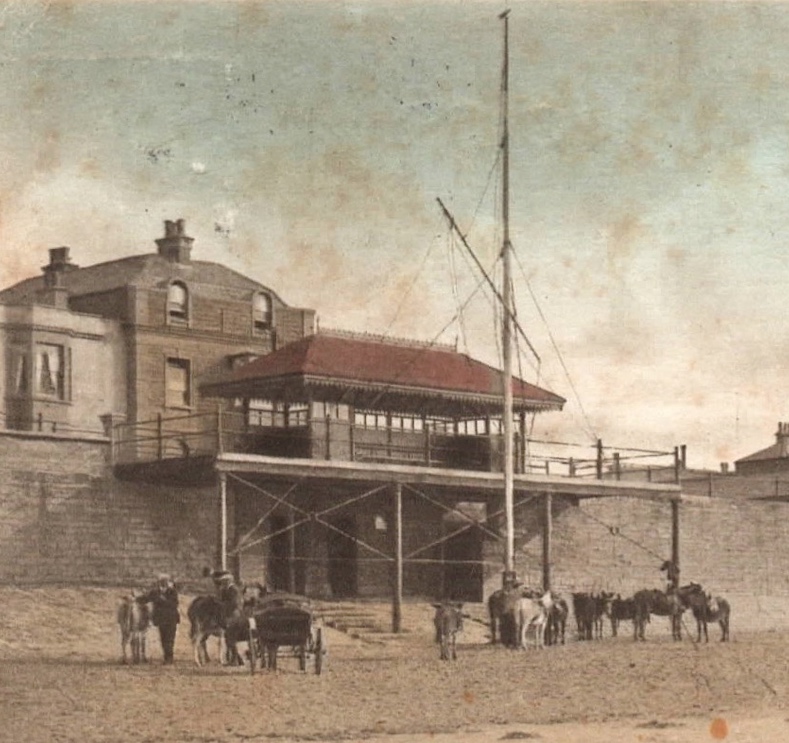
Picture above shows the first (1902) shelter platform and Customs House flagstaff in front. It seems likely that the boat house access was changed when the shelter was installed as the platform would now prevent its use for boats.
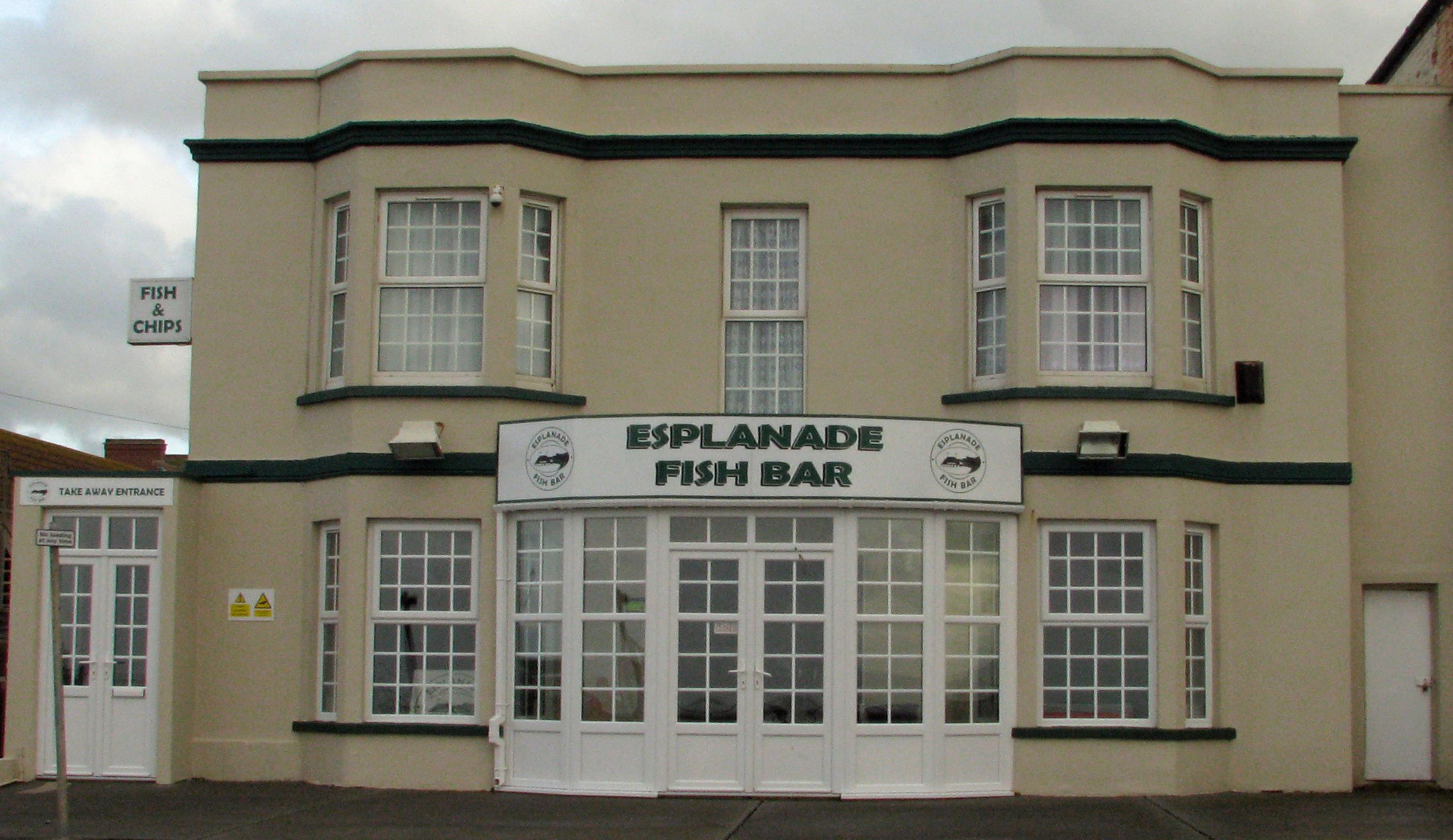
The Customs House Building currently used as a Fish & Chip shop.
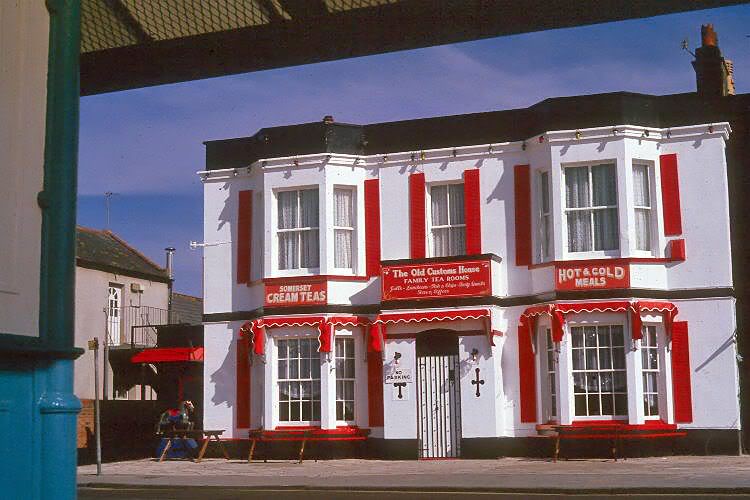
The Building was previously used as a restaurant.
